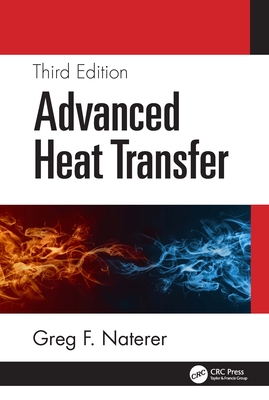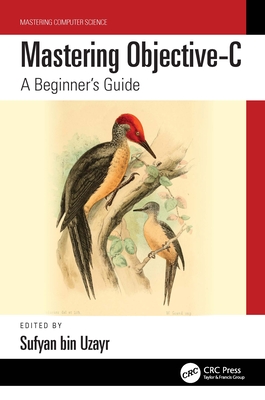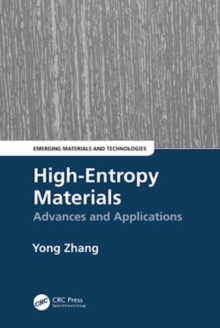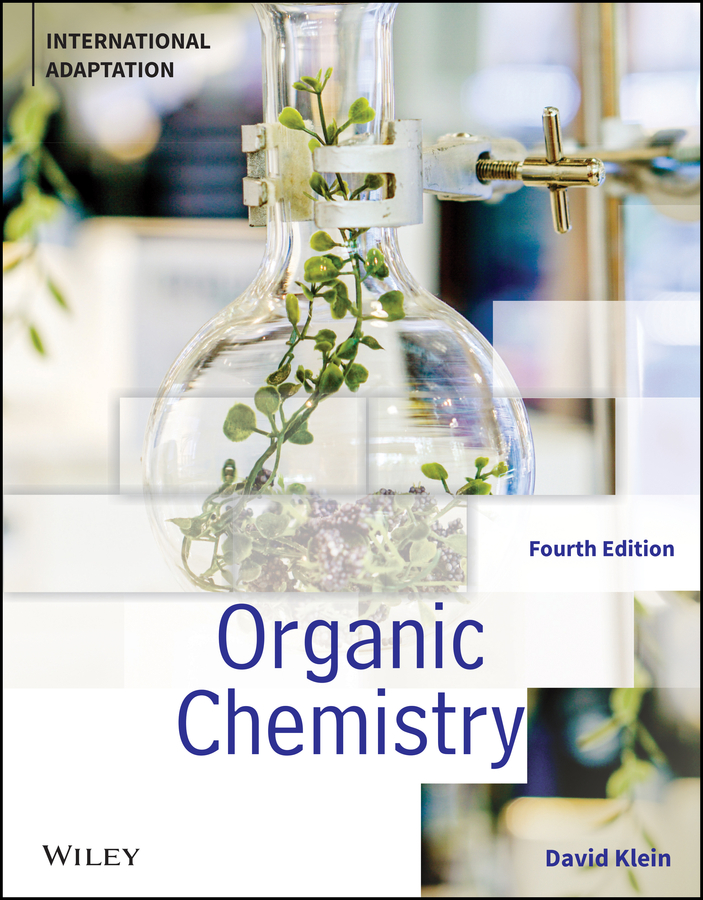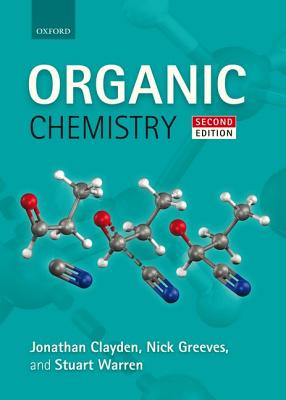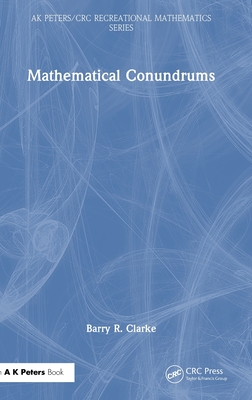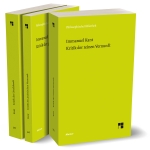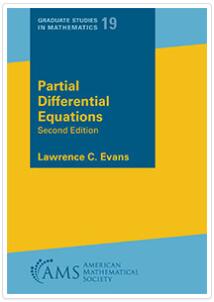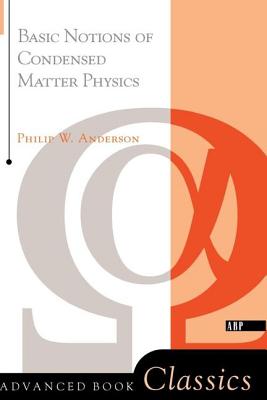图书简介
The book provides a valuable source of technical content for the prediction and analysis of advanced heat transfer problems, including conduction, convection, radiation, phase change, and chemically reactive modes of heat transfer.
With more than 20 new sections, case studies, and examples, the Third Edition broadens the scope of thermal engineering applications, including but not limited to biomedical, micro- and nanotechnology, and machine learning. The book features a chapter devoted to each mode of multiphase heat transfer.
FEATURES
Covers the analysis and design of advanced thermal engineering systems
Presents solution methods that can be applied to complex systems such as semi-analytical, machine learning, and numerical methods
Includes a chapter devoted to each mode of multiphase heat transfer, including boiling, condensation, solidification, and melting
Explains processes and governing equations of multiphase flows with droplets and particles
Applies entropy and the second law of thermodynamics for the design and optimization of thermal engineering systems
Advanced Heat Transfer, Third Edition, offers a comprehensive source for single and multiphase systems of heat transfer for senior undergraduate and graduate students taking courses in advanced heat transfer, multiphase fluid mechanics, and advanced thermodynamics. A solutions manual is provided to adopting instructors.
1 Introduction 1.1 Fundamental Concepts and Definitions 1.2 Conservation of Energy 1.3 Thermophysical Properties 1.3.1 Thermodynamic Properties 1.3.2 Transport Properties 1.4 Heat Conduction 1.5 Convection 1.6 Thermal Radiation 1.7 Phase Change Heat Transfer 1.8 Mass Transfer 1.9 References 1.10 Problems 2 Heat Conduction 2.1 Introduction 2.2 One-Dimensional Heat Conduction 2.2.1 Heat Conduction Equation 2.2.2 Steady Conduction in a Plane Layer 2.3 Thermal Resistance and Shape Factor 2.4 Fins and Extended Surfaces 2.5 Multidimensional Conduction 2.5.1 Cartesian Coordinates 2.5.2 Orthogonal Curvilinear Coordinates 2.5.3 Cylindrical and Spherical Coordinates 2.6 Method of Separation of Variables 2.7 Non-Homogeneous Systems 2.8 Conformal Mapping 2.9 Transient Heat Conduction 2.9.1 Lumped Capacitance Method 2.9.2 Semi-Infinite Solid 2.9.3 Finite Regions 2.10 Time-Dependent Boundary Conditions 2.11 Conduction in Porous Media 2.12 Heat Transfer in Living Tissue 2.13 Microscale Conduction 2.14 References 2.15 Problems 3 Convection 3.1 Introduction 3.2 Governing Equations 3.2.1 Conservation of Mass (Continuity Equation) 3.2.2 Conservation of Momentum (Navier-Stokes Equations) 3.2.3 Total Energy (First Law of Thermodynamics) 3.2.4 Mechanical Energy Equation 3.2.5 Internal Energy Equation 3.3 Non-Dimensional Form of Equations 3.3.1 Dimensionless Variables 3.3.2 Buckingham-Pi Theorem 3.4 Convection Boundary Layer 3.4.1 Boundary Layer Equations 3.4.2 Heat and Momentum Analogies 3.5 Evaporative Cooling 3.6 Flat Plate Boundary Layer 3.6.1 Scaling Analysis 3.6.2 Integral Solution 3.6.3 Similarity Solution 3.7 Flow Past a Wedge 3.8 Cylinder in Cross Flow 3.9 Other External Flow Configurations 3.9.1 Sphere 3.9.2 Tube Bundles 3.10 Internal Flow 3.10.1 Poiseuille Flow in Tubes 3.10.2 Non-Circular Ducts 3.11 Free Convection 3.11.1 Vertical Flat Plate 3.11.2 Body Gravity Function Method 3.11.3 Spherical Geometries 3.12 Introduction to Turbulence 3.12.1 Turbulence Spectrum 3.12.2 Reynolds Averaged Navier-Stokes Equations 3.12.3 Eddy Viscosity 3.12.4 Mixing Length 3.12.5 Near-Wall Flow 3.12.6 One and Two Equation Closure Models 3.13 Entropy and the Second Law 3.13.1 Formulation of Entropy Production 3.13.2 Apparent Entropy Production Difference 3.13.3 Dimensionless Entropy Production Number 3.14 References 3.15 Problems 4 Thermal Radiation 4.1 Introduction 4.2 Fundamentals of Radiation 4.2.1 Electromagnetic Spectrum 4.2.2 Radiation Intensity 4.2.3 Blackbody Radiation 4.3 Radiative Surface Properties 4.4 Radiation Exchange between Surfaces 4.5 Thermal Radiation in Enclosures 4.5.1 Radiation Exchange at a Surface 4.5.2 Radiation Exchange Between Surfaces4.5.3 Two-Surface Enclosures 4.6 Radiation in Participating Media 4.6.1 Attenuation by Absorption and Scattering 4.6.2 Scattering from Other Directions 4.6.3 Enhancement of Intensity by Emission 4.7 Equations of Energy Transfer for Participating Media 4.7.1 General Equation of Transfer 4.7.2 Radiative Flux Vector 4.7.3 Conservation of Energy 4.8 Approximate Solutions of the Equation of Transfer 4.8.1 Transparent Gas Approximation 4.8.2 Emission Approximation 4.8.3 Rosseland Approximation 4.9 Coupled Radiation and Convection 4.10 Solar Radiation 4.10.1 Components of Solar Radiation 4.10.2 Solar Angles 4.10.3 Incident Solar Radiation 4.11 Solar Collectors 4.11.1 Collector Efficiency and Heat Losses 4.11.2 Temperature Distribution 4.11.3 Heat Removal Factor 4.12 References 4.13 Problems 5 Gas-Liquid Two-Phase Flows 5.1 Introduction 5.2 Pool Boiling 5.2.1 Physical Processes 5.2.2 Nucleate Pool Boiling 5.2.3 Film Pool Boiling 5.3 Forced Convection Boiling in External Flow 5.3.1 Over a Flat Plate 5.3.2 Outside a Horizontal Tube 5.3.3 Other Surface Configurations 5.4 Two-Phase Flow in Vertical Tubes 5.4.1 Vertical Flow Regimes 5.4.2 Formation of Bubbles 5.4.3 Models of Annular Flow and Heat Transfer 5.5 Internal Horizontal Two-Phase Flows 5.5.1 Flow Regimes in Horizontal Tubes 5.5.2 Dispersed Bubble Flow 5.5.3 One-Dimensional Model of Stratified Flow 5.5.4 Plug and Annular Flow Correlations 5.5.5 Multi-Regime Nusselt Number Correlations 5.6 Turbulence Modeling of Two-Phase Flows 5.7 Laminar Film Condensation 5.7.1 Axisymmetric Bodies 5.7.2 Other Configurations 5.8 Turbulent Film Condensation 5.8.1 Over a Vertical Plate 5.8.2 Outside a Sphere 5.9 Forced Convection Condensation 5.9.1 Internal Flow in Tubes 5.9.2 Outside a Horizontal Tube 5.9.3 Finned Tubes 5.10 Thermosyphons and Heat Pipes 5.10.1 Transport Processes 5.10.2 Operational Limitations 5.11 References5.12 Problems 6 Multiphase Flows with Droplets and Particles 6.1 Introduction 6.2 Dispersed Phase Equations 6.2.1 Particle Equation of Motion 6.2.2 Convective Heat and Mass Transfer 6.3 Carrier Phase Equations 6.3.1 Volume Averaging Method 6.3.2 Conservation of Mass 6.3.3 Momentum Equations 6.3.4 Conservation of Energy (Total Energy Equation) 6.3.5 Thermal Energy Equation 6.4 Heat Transfer from Droplets 6.4.1 Lumped Capacitance Solution 6.4.2 Internal Temperature Distribution within a Droplet 6.4.3 Solidification of Droplets 6.5 Impinging Droplets on a Freezing Surface 6.6 Droplet to Particle Transition 6.6.1 Physical Processes 6.6.2 Solvent Evaporation and Droplet Shrinkage 6.7 Forced Convection Melting of Particles 6.8 Radiative Heat Transfer from Particles 6.8.1 Absorption and Emission in a Gas Layer 6.8.2 Particulate Radiation 6.9 Internal Flows with Particles 6.9.1 Slurries 6.9.2 Vertical Flows in Pipelines 6.9.3 Horizontal Transport of Solid Particles 6.9.4 Packed Bed Flow 6.10 Nanofluids and Nanoparticles 6.10.1 Transport Phenomena 6.10.2 Governing Transport Equations 6.10.3 Thermal Conductivity 6.10.4 Heat Transfer and Nusselt Number 6.11 References 6.12 Problems 7 Solidification and Melting 7.1 Introduction 7.2 Thermodynamics of Phase Change 7.3 Governing Equations 7.3.1 General Scalar Transport Equation 7.3.2 Mass and Momentum Equations 7.3.3 Energy Equation 7.3.4 Second Law of Thermodynamics 7.4 Freezing in a Semi-Infinite Domain 7.4.1 Stefan Problem 7.4.2 Integral Solution 7.5 Uniform Phase Interface Velocity 7.6 Solidification with Convective Boundary Cooling 7.6.1 Perturbation Solution 7.6.2 Quasi-Stationary Solution 7.6.3 Frozen Temperature Approximate Solution 7.6.4 Multicomponent Systems 7.7 Cylindrical Geometry 7.7.1 Solidification in a Semi-Infinite Domain 7.7.2 Heat Balance Integral Solution 7.7.3 Melting with a Line Heat Source 7.7.4 Superheating in the Liquid Phase 7.8 Spherical Geometry 7.9 References 7.10 Problems 8 Chemically Reacting Flows 8.1 Introduction 8.2 Mixture Properties 8.3 Reaction Rates 8.4 Governing Conservation Equations 8.4.1 General Mole Balance Equation 8.4.2 Energy Balance 8.5 Types of Chemical Reactors 8.5.1 Batch Reactor 8.5.2 Continuous Stirred Tank Reactor 8.5.3 Plug Flow Reactor 8.5.4 Packed Bed Reactor 8.6 Diffusive Transport Phenomena 8.6.1 Heterogeneous Reaction 8.6.2 Homogeneous Reaction 8.6.3 Reaction in a Porous Catalyst 8.7 Heat and Fluid Flow with Chemical Reactions 8.8 Fuels and Combustion 8.8.1 Combustion Process 8.8.2 Burning Fuel Droplet 8.8.3 Radiation Exchange 8.9 Multiphase Reacting Mixtures 8.9.1 Physical Processes 8.9.2 Shrinking Core Model 8.9.3 Progressive Conversion Model 8.10 Fluidized Beds 8.10.1 Hydrodynamics 8.10.2 Heat and Mass Transfer 8.10.3 Reaction Rates for Solid Conversion 8.10.4 Non-Catalytic Gas-Solid Reaction Model 8.11 References 8.12 Problems 9 Heat Exchangers 9.1 Introduction 9.2 Types of Heat Exchangers 9.3 Heat Exchanger Analysis 9.3.1 Log Mean Temperature Difference 9.3.2 Correction Factor for Complex Configurations 9.3.3 Pressure Drop 9.4 Effectiveness - NTU Method 9.5 Honeycomb Heat Exchangers 9.6 Moving Bed Heat Exchangers 9.7 Thermal Enhancement with Metal Foams 9.8 Microchannel Heat Exchangers 9.9 Thermal Response to Transient Temperature Changes 9.10 Three-Fluid Heat Exchangers 9.11 Two-Phase Heat Exchangers 9.11.1 Compact Heat Exchanger 9.11.2 Helically Coiled Tube Heat Exchanger 9.12 Optimization by Entropy Generation Minimization 9.12.1 Counterflow Heat Exchanger 9.12.2 Heat Exchangers with Flow Imbalance 9.12.3 Entropy Generation with Phase Change 9.12.4 Finned Tube Crossflow Heat Exchanger 9.13 References 9.14 Problems 10 Computational Heat Transfer 10.1 Finite Difference Method 10.1.1 Steady-State Solution 10.1.2 Transient Solutions 10.2 Finite Element Method 10.2.1 Weighted Residuals 10.2.2 Solution Procedure 10.3 Spatial and Temporal Interpolation 10.3.1 Triangular Elements 10.3.2 Quadrilateral Elements 10.3.3 Time-Dependent Problems 10.4 Applications to Heat and Fluid Flow 10.4.1 Two-Dimensional Formulation of Heat Conduction 10.4.2 Computational Fluid Dynamics 10.5 Finite Volume Method 10.5.1 Discretization of General Scalar Conservation Equation 10.5.2 Transient, Convection, Diffusion and Source Terms 10.5.3 SIMPLE and SIMPLEC Methods 10.5.4 Turbulent Flow Modeling 10.6 Control-Volume-Based Finite Element Method 10.6.1 General Scalar Conservation Equation 10.6.2 Transient, Convection, Diffusion and Source Terms 10.6.3 Assembly of Subcontrol Volume Equations 10.7 Radiation Heat Transfer 10.7.1 Discrete Transfer Radiation Model 10.7.2 Discrete Ordinates Model 10.7.3 Finite Volume Method 10.8 Two-Phase Flows 10.8.1 Liquid-Gas Phase Change 10.8.2 Solid-Liquid Phase Change 10.9 Machine Learning 10.9.1 Introduction 10.9.2 Artificial Neural Networks 10.9.3 Case Studies of Conduction and Forced Convection 10.9.4 Linear Regression 10.10 Other Methods 10.11 References 10.12 Problems 11 Appendices 11.1 Appendix A: Vector and Tensor Notations 11.2 Appendix B: Conversion of Units and Constants 11.3 Appendix C: Convection Equations in Cartesian, Cylindrical and Spherical Coordinates 11.4 Appendix D: Properties of Solids 11.5 Appendix E: Properties of Gases 11.6 Appendix F: Properties of Liquids 11.7 Appendix G: Radiative Properties 11.8 Appendix H: Atomic Weights of Elements 11.9 Appendix I: Thermochemical Properties 12 Index
Trade Policy 买家须知
- 关于产品:
- ● 正版保障:本网站隶属于中国国际图书贸易集团公司,确保所有图书都是100%正版。
- ● 环保纸张:进口图书大多使用的都是环保轻型张,颜色偏黄,重量比较轻。
- ● 毛边版:即书翻页的地方,故意做成了参差不齐的样子,一般为精装版,更具收藏价值。
关于退换货:- 由于预订产品的特殊性,采购订单正式发订后,买方不得无故取消全部或部分产品的订购。
- 由于进口图书的特殊性,发生以下情况的,请直接拒收货物,由快递返回:
- ● 外包装破损/发错货/少发货/图书外观破损/图书配件不全(例如:光盘等)
并请在工作日通过电话400-008-1110联系我们。
- 签收后,如发生以下情况,请在签收后的5个工作日内联系客服办理退换货:
- ● 缺页/错页/错印/脱线
关于发货时间:- 一般情况下:
- ●【现货】 下单后48小时内由北京(库房)发出快递。
- ●【预订】【预售】下单后国外发货,到货时间预计5-8周左右,店铺默认中通快递,如需顺丰快递邮费到付。
- ● 需要开具发票的客户,发货时间可能在上述基础上再延后1-2个工作日(紧急发票需求,请联系010-68433105/3213);
- ● 如遇其他特殊原因,对发货时间有影响的,我们会第一时间在网站公告,敬请留意。
关于到货时间:- 由于进口图书入境入库后,都是委托第三方快递发货,所以我们只能保证在规定时间内发出,但无法为您保证确切的到货时间。
- ● 主要城市一般2-4天
- ● 偏远地区一般4-7天
关于接听咨询电话的时间:- 010-68433105/3213正常接听咨询电话的时间为:周一至周五上午8:30~下午5:00,周六、日及法定节假日休息,将无法接听来电,敬请谅解。
- 其它时间您也可以通过邮件联系我们:customer@readgo.cn,工作日会优先处理。
关于快递:- ● 已付款订单:主要由中通、宅急送负责派送,订单进度查询请拨打010-68433105/3213。
本书暂无推荐
本书暂无推荐
